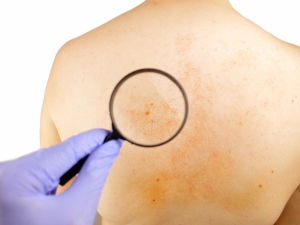
We know that psoriasis, which affects about 7.5 million Americans, is associated with an increased risk for conditions such as chronic kidney disease, diabetes, and cardiovascular disease; but what about patients' future risk for major health problems? This study is the first to link psoriasis to an increased risk of death using an objective measure of disease severity, Body Surface Area, rather than by looking at treatment patterns.
The authors looked at Body Surface Area (BSA), rather looking at treatment patterns, such as whether a patient was receiving oral, injectable or phototherapy treatment for the condition. BSA literally measures the percentage of the body covered by psoriasis. Using a database from the United Kingdom, the team looked at 8,760 patients with psoriasis and 87,600 people without. They sent surveys to the patients' general practitioners to determine the body surface area affected by psoriasis. They then looked at the number of deaths in each group by person-years, a measure that combines the number of people with the number of years of available data about them. The average follow-up time was about four years.
In that time, an average of 6.39 deaths occurred per 1,000 person years in patients with psoriasis on more than 10 percent of their bodies, compared to 3.24 deaths in patients without psoriasis. Even when researchers adjusted for other demographic factors and additional medical problems--and even when they controlled for risk factors such as smoking and obesity—patients with a BSA greater than 10 percent were almost twice as likely to have died as were people their same age and gender who didn't have the condition.
The authors say more research is needed to better understand the specific causes of death in patients with extensive psoriasis--and to see if and how treatment can impact that risk.
Read the study article in the Journal of Investigative Dermatology.
Science Daily
Med Page Today
Penn press release
Read about a related study: Psoriasis severity is linked to type 2 diabetes.